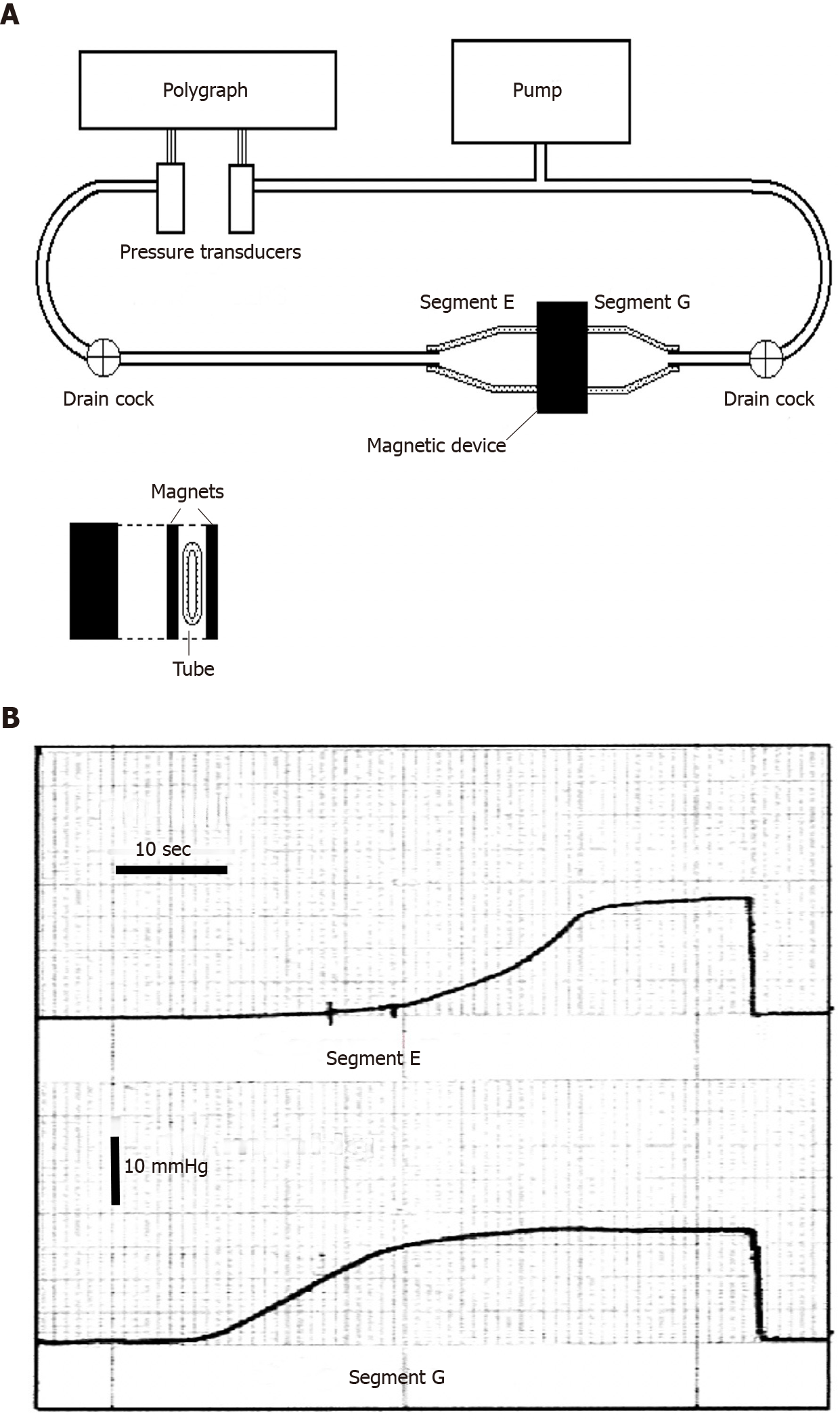Copyright
©The Author(s) 2021.
World J Gastroenterol. Dec 28, 2021; 27(48): 8227-8241
Published online Dec 28, 2021. doi: 10.3748/wjg.v27.i48.8227
Published online Dec 28, 2021. doi: 10.3748/wjg.v27.i48.8227
Figure 1 Benchtop experiment to demonstrate the possibility of creating a sphincter with two magnetic plaques.
A: Schematic illustration of the bench model used to study the new anti-reflux device based on magnets. On the right there is a flaccid polyethylene tube 2.8 cm in diameter, mimicking the gastro-esophageal junction. It is squeezed perpendicularly by two rectangular magnets made of plastoferrite (Flexo) 2 cm × 4 cm × 0.5 cm with an attraction force of 0.36 N/cm2, when in contact and 0.16 N/cm2, at a distance of 7 mm. It creates a high pressure zone 2 cm wide, that divides the tube in segment E (esophagus) and G (stomach). The tube is perfused with water by a pump and the pressure variations in each segment are detected with 2 pressure transducers and recorded by a polygraph; B: Intraluminal pressure variations in segment G (bottom) and E (top). The pressure in segment G (stomach) was progressively increased by the pump and when it reached approximately 11.5 mmHg, the magnets, simulating the sphincter, get detached, so that the pressure in segment E (esophagus) starts to increase, mimicking a gastro-esophageal reflux and reaching the level of the segment G. Once the pump stops the pressure falls and the magnets adhere again, closing the passage. Exchanging the letter E for G and G for E, this sequence of events may represent the passage of a bolus through the zone squeezed by the magnets. A-B: Citation: Bortolotti M. A novel anti-reflux device based on magnets. J Biomech 2006; 39: 564-7. Copyright© The Authors 2020. Published by Elsevier. The authors obtained permission for use of the figure from the Elsevier Publishing Group (Supplementary material).
- Citation: Bortolotti M. Magnetic challenge against gastroesophageal reflux . World J Gastroenterol 2021; 27(48): 8227-8241
- URL: https://www.wjgnet.com/1007-9327/full/v27/i48/8227.htm
- DOI: https://dx.doi.org/10.3748/wjg.v27.i48.8227









